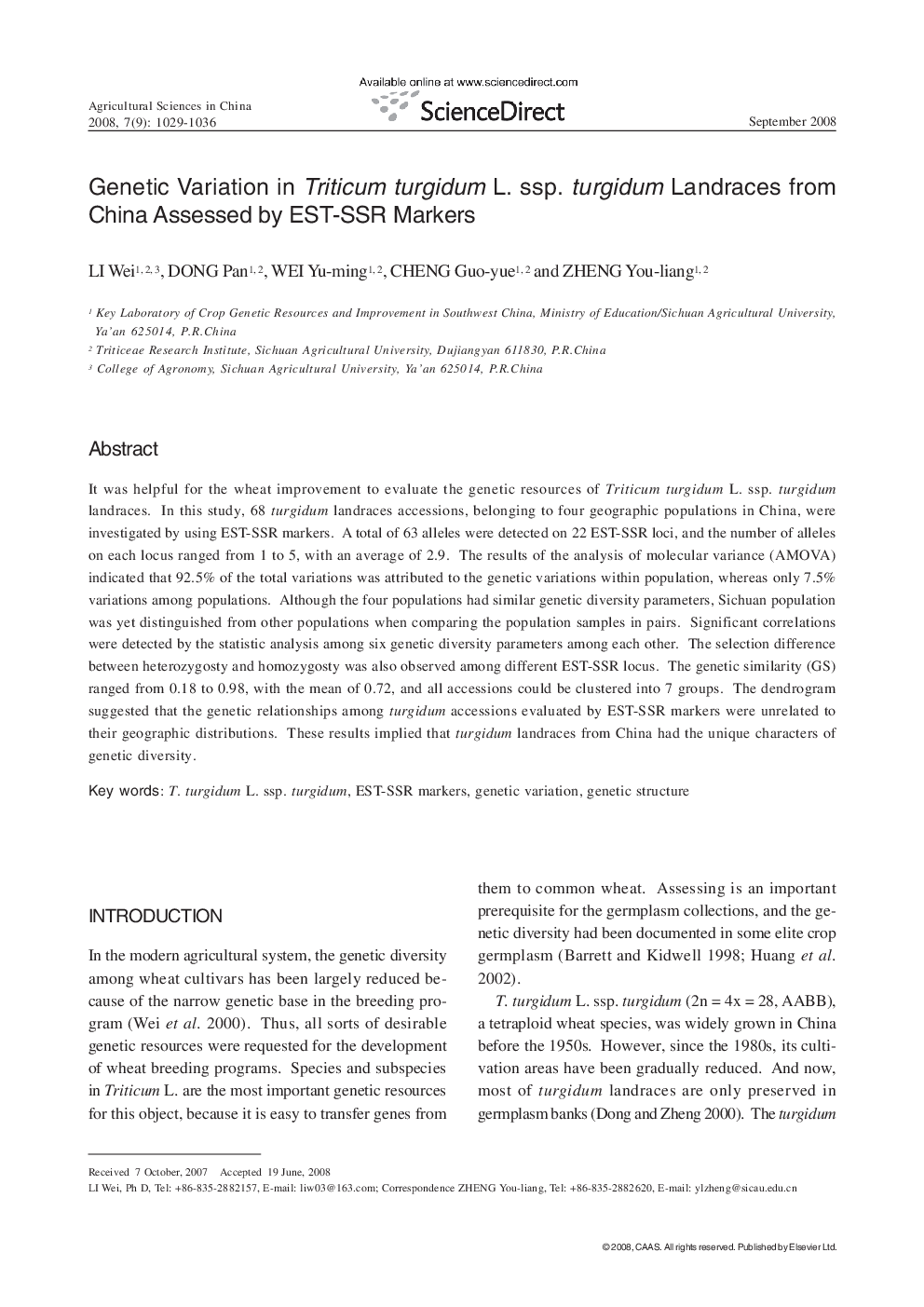| Article ID | Journal | Published Year | Pages | File Type |
|---|---|---|---|---|
| 4490558 | Agricultural Sciences in China | 2008 | 8 Pages |
It was helpful for the wheat improvement to evaluate the genetic resources of Triticum turgidum L. ssp. turgidumlandraces. In this study, 68 turgidum landraces accessions, belonging to four geographic populations in China, were investigated by using EST-SSR markers. A total of 63 alleles were detected on 22 EST-SSR loci, and the number of alleles on each locus ranged from 1 to 5, with an average of 2.9. The results of the analysis of molecular variance (AMOVA) indicated that 92.5% of the total variations was attributed to the genetic variations within population, whereas only 7.5% variations among populations. Although the four populations had similar genetic diversity parameters, Sichuan population was yet distinguished from other populations when comparing the population samples in pairs. Significant correlations were detected by the statistic analysis among six genetic diversity parameters among each other. The selection difference between heterozygosty and homozygosty was also observed among different EST-SSR locus. The genetic similarity (GS) ranged from 0.18 to 0.98, with the mean of 0.72, and all accessions could be clustered into 7 groups. The dendrogram suggested that the genetic relationships among turgidum accessions evaluated by EST-SSR markers were unrelated to their geographic distributions. These results implied that turgidum landraces from China had the unique characters of genetic diversity.
